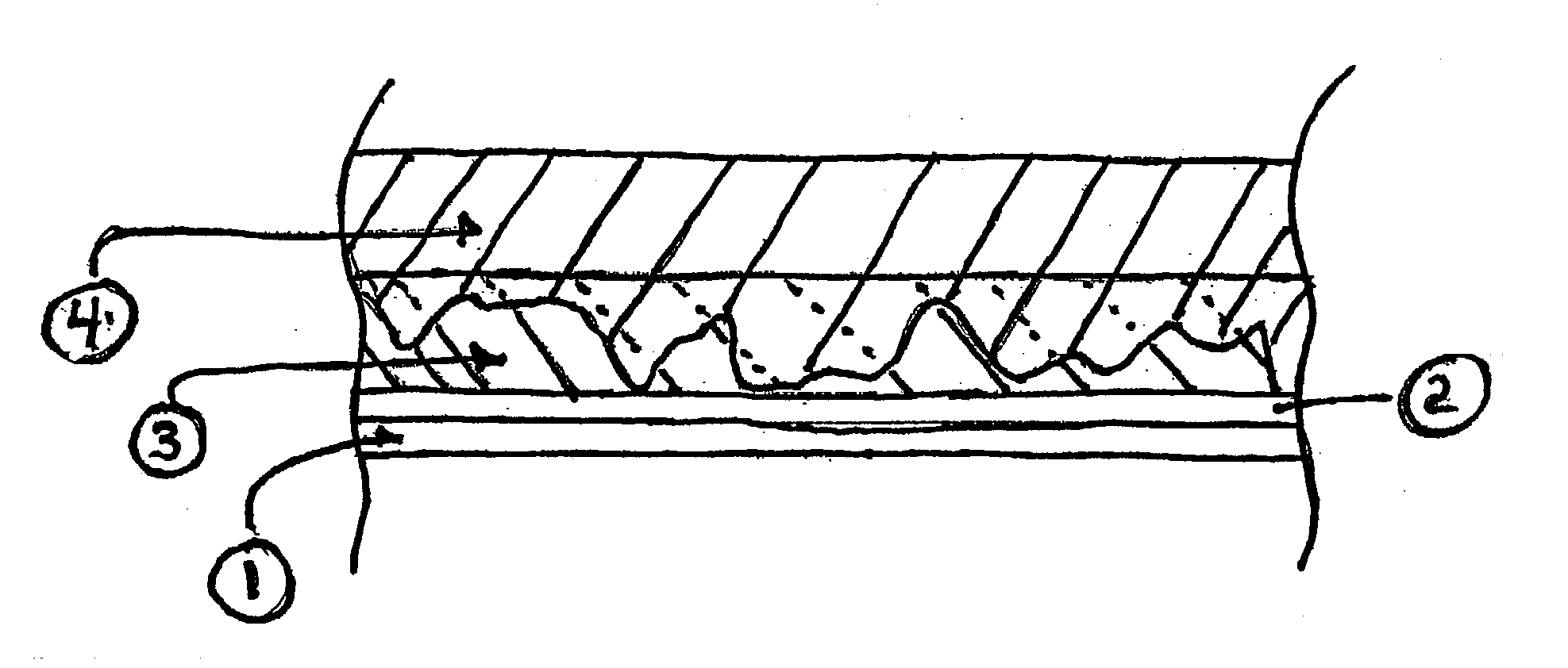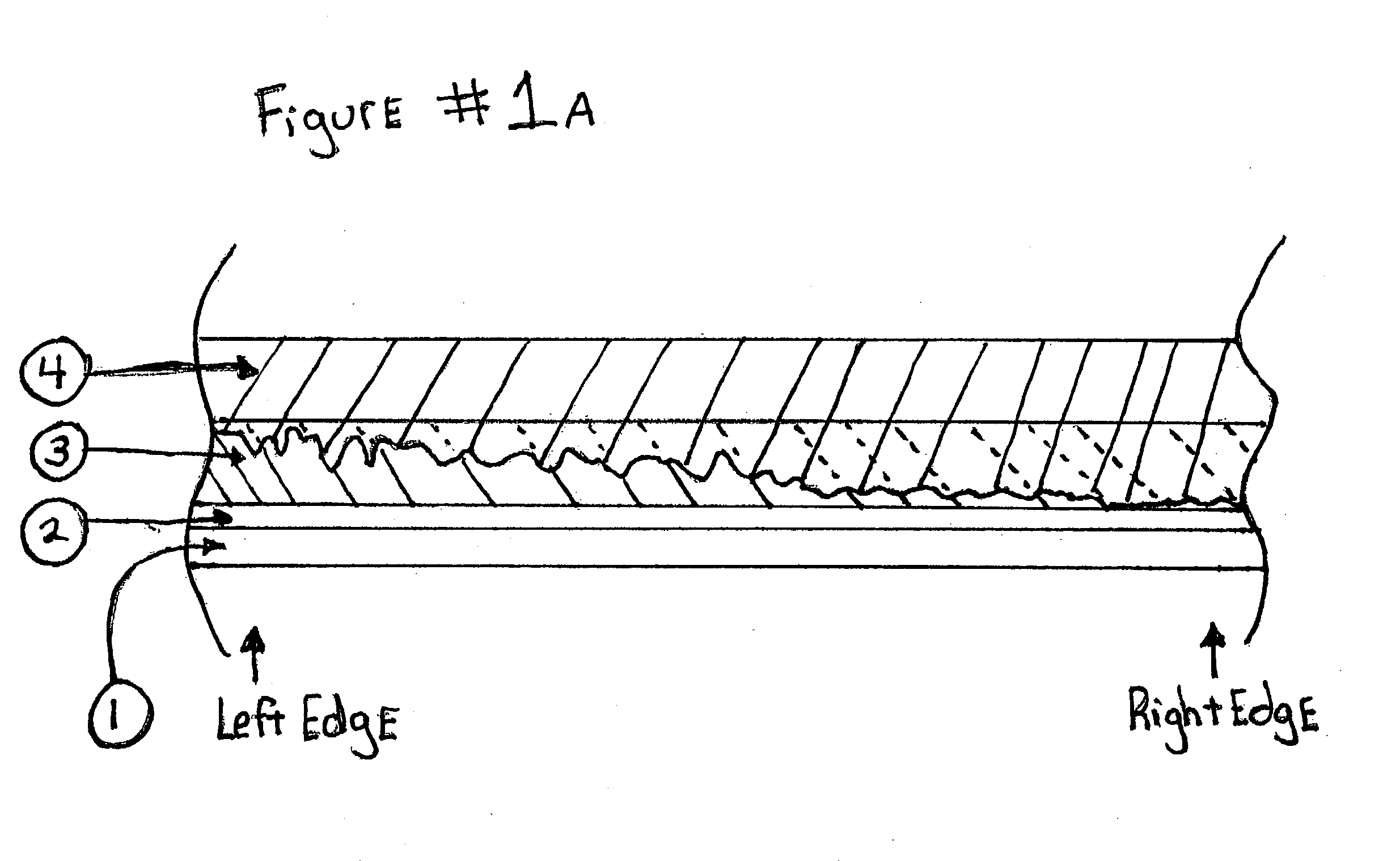Controlled penetration subpad
a technology of subpads and sealing pads, which is applied in the direction of flexible wheels, manufacturing equipment/tools, manufacturing tools, etc., can solve the problems of circuitry size, polishing pads that cannot be sanded, and require more stringent requirements
- Summary
- Abstract
- Description
- Claims
- Application Information
AI Technical Summary
Benefits of technology
Problems solved by technology
Method used
Image
Examples
example 1
[0072]A polishing belt was produced by casting a polyurethane polishing layer over a commercially available subpad material laminated to an endless stainless steel belt.
[0073]The endless stainless steel belt (substrate 1) was approximately 94 inches long, 13 inches wide, and 0.020 inches thick. The endless stainless steel band in this example was obtained from Belt Technologies Inc. (Agawam, Mass.).
[0074]Subpad 3 in this example was obtained from Thomas West Inc. (Sunnyvale, Calif.). The commercial designation for the subpad is 817. This material is a yellow colored non-woven material, impregnated with a soft elastomeric composition. Despite the impregnation, the subpad material still is porous and compressible. The subpad material was supplied with a rubber-based pressure sensitive adhesive laminated to one side. The subpad was obtained in rectangular pieces approximately 12 inches wide and 31.25 inches long. The thickness of the subpad and adhesive together was approximately 0.028...
example 2
[0091]The method of Example 1 was repeated using a different non-woven material as subpad 3. In this example, a non-woven material called AQUILINE™ and made by TEXON International (Leicester, England), was laminated on one side with the same rubber-based pressure sensitive adhesive 2 as was used in Example 1. The AQUILINE™ material comprises non-woven polyester fibers with much less impregnating material compared to the 817 material from Thomas West Inc. Comparing the two different subpad materials using a microscope or SEM shows that the AQUILINE™ material has a much more open structure and a higher degree of porosity than the 817. The AQUILINE™ subpad was cut into rectangular pieces approximately 12 inches wide and 31.25 inches long. The thickness of the subpad and adhesive together was approximately 0.038 inches, where the subpad layer was approximately 0.032 inches thick, and the adhesive layer was approximately 0.006 inches thick.
[0092]The same methods as described in Example 1...
example 3
[0097]The method of Example 2 was repeated, except that in this case a barrier 5 was applied to the AQUILINE™ subpad material prior to casting polishing layer 4. A barrier was achieved using a knife-over-roll technique to apply a polyurethane adhesive composition (D2596H Adhesive and D2597 Crosslinker, available from DELA, Inc.) to one side of the non-woven material prior to having the pressure sensitive adhesive laminated to the other side of the non-woven. The barrier material formed a very thin film at the top surface of the non-woven material, adopting the texture and topography of the non-woven and substantially sealing the top surface of the subpad layer. A single belt was used for qualitative peel tests, penetration measurements, hardness measurements, and compressive testing. Other polishing belts were prepared according to the same method, and were used to check lamination integrity on the belt roller apparatus depicted in FIG. 5.
[0098]Qualitative peel testing indicated tha...
PUM
| Property | Measurement | Unit |
|---|---|---|
| diameter | aaaaa | aaaaa |
| thickness | aaaaa | aaaaa |
| thickness | aaaaa | aaaaa |
Abstract
Description
Claims
Application Information
 Login to View More
Login to View More - R&D
- Intellectual Property
- Life Sciences
- Materials
- Tech Scout
- Unparalleled Data Quality
- Higher Quality Content
- 60% Fewer Hallucinations
Browse by: Latest US Patents, China's latest patents, Technical Efficacy Thesaurus, Application Domain, Technology Topic, Popular Technical Reports.
© 2025 PatSnap. All rights reserved.Legal|Privacy policy|Modern Slavery Act Transparency Statement|Sitemap|About US| Contact US: help@patsnap.com



